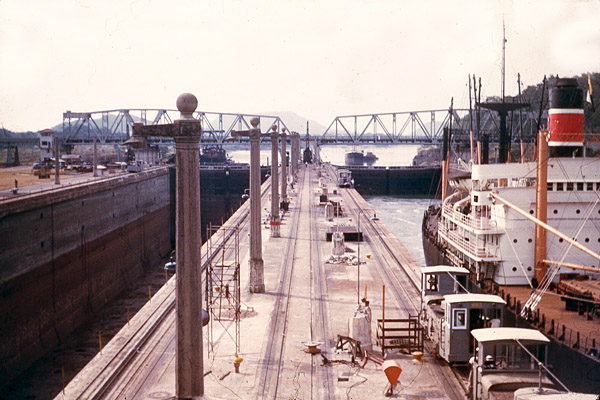|
|
Photo of the Week
May 4, 2008
|
|
|
The photo above is a scan from the book Panama's Canal by Carl R. Oliver. Mr. Oliver writes in the book, "Although their hulls fit into the locks, their flight decks were too wide and overlapped chamber walls. In March 1928, the U.S.S. Lexington was squeezing through when it slipped out of control and demolished six concrete lampposts and a handrail." This was the beginning of many years of problems with these big naval vessels. The problems prompted Congress in 1939 to authorize construction of a Third Locks, but that is another story The caption in the book for this photo is "The Lexington out of control in Pedro Miguel Locks, just after knocking over the first concrete lamppost. The magnificent photo
below below was sent to me by CZ Images visitor and contributor Philip Hadarits.
Philip told me that this photo was taken by his father during one of the
first Miraflores Locks chamber overhauls just after World War II.
It is a classic photo and may be one of a kind. The image (scanned
from a 35mm slide) shows some of the old concrete lampposts removed
because of the big carriers and other war ships. There is a small
pipe and lamp shade fixture coming our to the middle of the old concrete
post. This whole subject has fascinated me for years and I am finally happy to share what I have found out about these old lamppost problems. I am sure there is much more out there about this, but as everything, this is just the beginning.
|
 |
Home|
Photo
of the Week | Photo
Archives | Main
Show Room | Photo
Room | Military
History
PC
History | Sign
Guest Book | Read
Guest Book | Search
CZ Images | CZ
Web Searcher
Gift
Shop | Links
